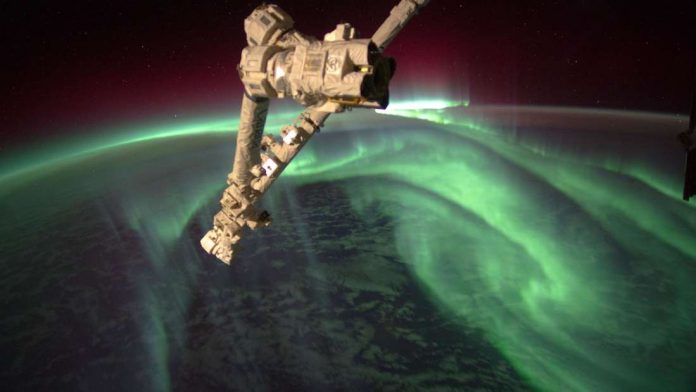Scientists are investigating an anomaly in Earth’s defensive magnetic field that has been dubbed the ‘South Atlantic Anomaly’.
Back in January, a spike in interest regarding Earth’s magnetic field – and whether it’s about to flip or not – occurred. Despite a significant weakening of its magnetic field strength in recent decades, there’s no indication that it’s “about” to flip, and even if it did, the consequences of a geomagnetic reversal would likely not be as apocalyptic as some may claim.
Saying that, there’s plenty about the planet’s magnetic field that we know fairly little about, including its weak spot, the South Atlantic Anomaly (SAA), which extends from Zimbabwe to Chile. Fortunately, a new paper in Geophysical Research Letters shines some light on that with a tale that extends back, rather appropriately, to the Iron Age.
The team’s beautifully written study describes the SAA and the region as the origin of the recent decay and “apparent collapse” of Earth’s magnetic field. They then emphasize that we know very little about this depression’s history thanks to a paucity of data, the likes of which are normally preserved in magnetic mineral-rich volcanic matter.
Upon cooling below a temperature known as the Curie Point, these minerals record the characteristics of Earth’s magnetic field at that exact point in time. This is how we know that, for example, the last time a complete geomagnetic reversal took place was 781,000 years ago.
Still, there’s a lot missing from the story, and the SAA is especially enigmatic – as are the underlying mechanisms within Earth’s iron-rich outer core that drive geomagnetic reversals in the first place. As there aren’t any solid ancient geomagnetic records in southern Africa before 1000 CE, the recent history of the SAA is one big blank spot.
Ingeniously, the team – coordinated by the University of Rochester – decided to look to archaeology, not merely geology, in order to find this missing piece of the puzzle.
Sifting through burnt grain bins, huts, and cattle enclosures from Early to Late Iron Age locales in northern South Africa, Botswana, and Zimbabwe, the team found clay artifacts containing small particles of magnetite and hematite, both of which preserve the Earth’s magnetic field features upon cooling.





























